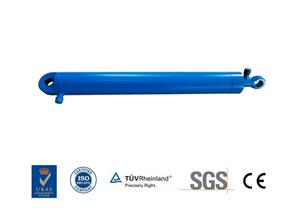Structural form of sheet metal screws
1.Press riveting screw
A new type of fastener applied to sheet metal or sheet metal. The principle is that the embossed teeth are pressed into the preset holes of the sheet metal. The diameter of the general preset holes is slightly smaller than the outer diameter of the riveting screw. The periphery of the hole is plastically deformed, and the deformed object is squeezed into the guide groove, thereby generating a locking effect. The riveting screws are divided into fast-cutting steel riveting screws, stainless steel riveting screws and copper and aluminum riveting screws, which should be used in different environments. The specifications are mostly used from M2 to M6.
Pressure riveting screws are divided into round head and hexagon head. Mainly round head, hex head is not commonly used.
Commonly used round head riveting screw types: (N) FH / FHS / FHA-M3 / M4 / M5-6-ZI / ZU / ZC.
Model A-M * -B-C
among them:
A is the material code (FH means carbon steel, FHS means stainless steel, FHA means aluminum, and N means hex head).
M * is the thread specification, the bottom hole is the same size as the thread.
B is the length code (6 means the total length of the screw is 6mm).
C is the surface treatment code (ZI means white zinc plating, ZU means blue zinc plating, ZC means color zinc plating)
2, welding screws
Welding screws are also called energy storage screws, bolt welding studs, or plant welding nails.
Although the purpose of welding screws and riveting screws is the same, the principle of use is quite different. The pressure riveting screw is fixed by its own locking embossing teeth, and the welding screw is added with a small welding spot on the head of the screw. The spot welding technology is used to weld the screw to the sheet metal to fix it. One male thread, so called a welding screw.
3.Captive screws
Also known as captive screws. The loose captive screw is a loose but not detached screw, also known as a spring screw. The captive screw is fixed on the mounting plate by pressing or riveting, and the position of the plate and the plate is fastened by the screw, which is also called a panel screw. After the captive screw is installed by riveting, it can be screwed in and out at will and it is not easy to fall off. The hand-screw cap generally has a straight-lined pull design to facilitate manual tightening. Tighten the screws.




